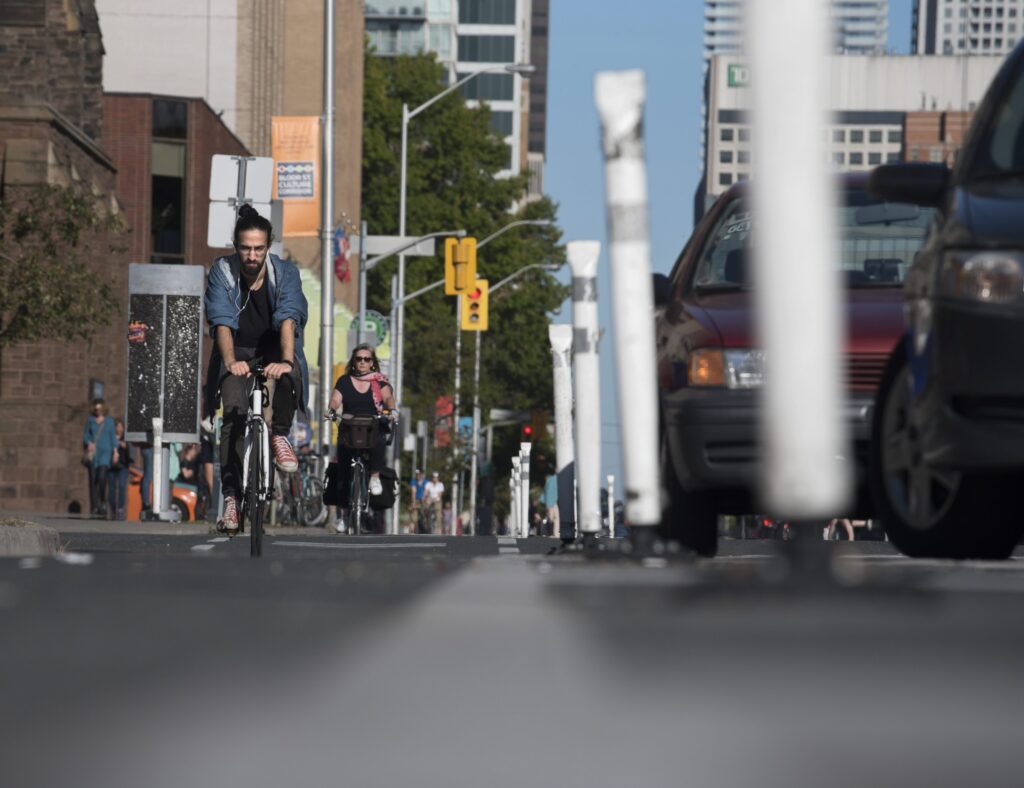Travel
Tunnel under 401, bike lane limits won’t ease Toronto traffic | The Narwhal

Get the inside scoop on The Narwhal’s environment and climate reporting by signing up for our free newsletter.
When I first started riding my bike in Toronto eight years ago, it was because I had no other choice.
I was entering my third year of university, desperate for a way to get around after spending the first half of my undergrad rationing transit tokens. There were times when I couldn’t afford the $3.25 it would cost me to get on the subway to visit family. When I got a job that paid a bit better, it was farther away and I couldn’t pay for the monthly transit pass that would allow me to commute there.
So, bike it was. Even when I fell while riding in a blizzard, even when I narrowly avoided getting run over on roads without protected bike lanes, I pedalled on. It was the only way I could afford to get around.
I’ve been thinking about those days a lot this month, in the wake of news that Premier Doug Ford is looking at limiting where cities can build new bike lanes, a move he claims will improve traffic. He cited two existing bike lanes as examples, the ones on Toronto’s University Avenue and Bloor Street West. He passes by them regularly, commuting from his home to Queen’s Park. Full disclosure, so do I — just on two wheels instead of four.
“We want to make sure that all forms of transportation move quickly, and that’s what it comes down to — making sure you aren’t putting bike lanes in the middle of some of the busiest streets in the country,” Ford told reporters last week. He added that bike lanes should go on side streets instead, a plan that critics say will not work in most areas, and backed up the proposal with justifications that don’t stand up to a fact check.
Restricting new bike lanes is obviously a bad idea in terms of public safety: there will always be people who, like my 20-year-old self, have no choice but to cycle on main streets. Forcing them to ride in car traffic can have deadly consequences — we’ve seen it in Belleville, Guelph, Elora, Niagara and Toronto in the last month alone.
It’s also not going to make Toronto’s god-awful gridlock any better. One look at the bike lanes on Bloor will tell you it probably isn’t the cyclists zipping by in a narrow lane that are causing the issue. It’s the cars filling the vast majority of the space. Bikes may be an easy strawman, but blaming them without evidence just inflames tensions on the road — and distracts us from finding real solutions.
This isn’t a matter of bikes versus cars, it’s fact: we know from decades of research that more car lanes encourage more people to drive, which makes traffic worse in the long run. It’s the same reason Ford’s other ideas for relieving traffic congestion — most recently a tunnel under Highway 401 that would likely cost billions, and two highways running through Ontario’s Greenbelt — won’t help either.
We also know the same concept works in reverse. If you take away a lane of car traffic, it will encourage people to leave their car at home and find different ways to move around. With improved public transit options or safe bike lanes, they wouldn’t have to look too far.
Every cyclist on the road means one less person in a car, taxi or rideshare — or one less passenger on public transit, which is more crowded and less reliable than it used to be.
It’s also pretty obvious that fewer vehicles on the road means fewer emissions spewing into our air that are bad for our health and the climate.
There will always be people who need to drive to get around Toronto. But the roads and our air will be clearer for everybody if those of us who can use other options do.
Ford does understand the importance of bike lanes, or at least he used to: “You’re nervous when there’s not bike lanes, at least I was,” he told TVO in 2017 after trying out cycling near Queen’s Park. He also campaigned on promises to put money back in people’s pockets, and biking is one of the cheapest ways to get around, requiring no fare or fuel.
So why is Ford doing this now? Maybe it’s because bike lanes have become an ideological wedge that he hopes will win him another election. Maybe because real solutions to traffic are complicated and often unpopular — like congestion pricing, which is proven to work.
Either way, the truth will be clear in a few years, when few new bike lanes are in sight through the gridlock.










